#Rasnal Telecom & Security
Explore tagged Tumblr posts
Text
Top Networking Solutions for Seamless Business Communication

In today’s fast-paced business environment, effective communication is the backbone of success. As organizations expand and adopt new technologies, the need for reliable and efficient networking solutions has become more critical than ever. The right networking solution can significantly improve business operations, streamline communication, and enhance collaboration among teams, regardless of their location.
What Are Networking Solutions?
Networking solutions refer to a suite of technologies and strategies designed to establish, manage, and optimize communication channels within a business. These solutions encompass everything from network infrastructure to software that enables seamless data sharing, communication, and collaboration among employees, clients, and partners. Whether you're setting up a local area network (LAN), implementing a wide area network (WAN), or securing remote connections, networking solutions help ensure that your communications remain fluid and uninterrupted.
1. Cloud-Based Networking Solutions
Cloud-based networking solutions are revolutionizing how businesses approach communication. By utilizing the cloud, companies can access scalable network infrastructure without the need for heavy upfront investments in hardware. Cloud networking provides flexibility, allowing businesses to expand and scale their network needs as they grow. It also simplifies data storage and management, making collaboration across departments and teams more efficient.
Key Benefits:
Cost-effective and scalable
Easy integration with existing systems
Remote access for remote workers
2. Wireless Networking Solutions
Wireless networks have become an essential part of modern business environments. With the advent of Wi-Fi 6 and other advancements in wireless technology, businesses can offer faster internet speeds, improved connectivity, and enhanced user experiences. Wireless networking solutions eliminate the need for bulky cables and allow for greater mobility, making it easier for employees to stay connected regardless of where they are in the office or on the go.
Key Benefits:
Increased mobility for employees
Reduced hardware costs (no need for extensive wiring)
Seamless communication without connectivity issues
3. Virtual Private Networks
For businesses with remote teams or branches in different locations, maintaining secure communication is paramount. A VPN (Virtual Private Network) is one of the best networking solutions to ensure secure data transfer between devices over the internet. VPNs encrypt communication channels, making it impossible for third parties to access sensitive data. Whether you have employees working from home or offices spread across different regions, a VPN ensures that all communications are safe and protected.
Key Benefits:
Secure communication channels
Protection of sensitive data
Access to company resources from remote locations
4. Unified Communications
Unified Communications (UC) solutions integrate various communication tools—such as voice calls, video conferencing, messaging, and email—into a single platform. This unified approach streamlines communication within the organization and enhances collaboration across departments. With UC, businesses can ensure that employees stay connected and productive, whether they’re in the office or working remotely.
Key Benefits:
Centralized communication tools
Improved collaboration and decision-making
Reduced communication barriers across teams
5. Network Security Solutions
In an age where data breaches and cyberattacks are frequent concerns, businesses cannot afford to overlook network security. Robust network security solutions, such as firewalls, intrusion detection systems, and multi-factor authentication, are essential for protecting sensitive business data. By securing communication channels, businesses can prevent unauthorized access, safeguard customer information, and ensure regulatory compliance.
Key Benefits:
Protects against cyber threats and data breaches
Ensures compliance with security regulations
Enhances trust with clients and stakeholders
7. Fiber Optic Networking
For businesses that require high-speed, reliable communication, fiber optic networking solutions are an excellent choice. Fiber optics offer significantly faster speeds and higher bandwidth than traditional copper-based systems. This is crucial for businesses handling large volumes of data, running cloud applications, or engaging in video conferencing.
Key Benefits:
High-speed internet and data transfer
Increased bandwidth for large-scale operations
Reduced network latency for better user experience
Why Choose Rasnal Telecom for Your Networking Solutions
Rasnal Telecom offers customized, high-performance networking solutions designed to meet your business's unique needs. With years of experience, we provide reliable and scalable network infrastructure that enhances connectivity and supports seamless communication. Our team works closely with you to deliver solutions that optimize performance and drive business growth. Choose Rasnal Telecom for cutting-edge technology, personalized service, and trusted expertise.
Conclusion
Choosing the right networking solution for your business is vital to achieving seamless communication and driving overall success. Whether you’re looking for scalable cloud solutions, secure VPNs, or cutting-edge unified communication tools, there are numerous options available to meet your unique needs. By investing in the best networking technologies, you can improve collaboration, boost productivity, and stay ahead of the competition.
1 note
·
View note
Text
Digital Grounding Device: Essential for Electronic Stability
In the intricate universe of modern electronics, where precision and reliability are paramount, an often-overlooked yet critically important element is grounding. For decades, traditional grounding systems, typically involving copper rods driven into the earth, have served as the foundation for electrical safety and stability. However, as electronic systems become increasingly complex, sensitive, and operate at higher frequencies, these conventional methods are often insufficient to meet the demands for truly stable and interference-free operation. This is where the digital grounding device emerges, revolutionizing how we approach electronic stability.
Why Traditional Grounding Falls Short
Traditional grounding is primarily designed for safety – to provide a path for fault currents in case of a short circuit, thereby preventing electric shock and fire hazards. While crucial for safety, it struggles with the nuances of digital and high-frequency environments. Issues like ground loops, common-mode noise, stray currents, and transient overvoltages can plague sensitive electronic equipment, leading to erratic performance, data corruption, reduced lifespan, and even complete system failure. In a world where microseconds of downtime can mean significant financial losses or critical service interruptions, these subtle yet pervasive problems demand a more sophisticated solution.
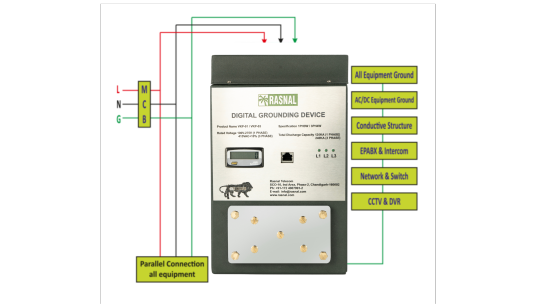
Imagine a sophisticated data center, a high-precision medical imaging machine, or a critical telecommunications hub. These systems operate with incredibly low voltage signals and rapid data transfers. Even minor fluctuations or noise in the ground reference can introduce errors, degrade signal integrity, and compromise the overall reliability of the system. Traditional grounding, with its inherent resistance and inductance, often cannot provide the ultra-stable, low-impedance ground reference that these cutting-edge applications require.
Enter the Digital Grounding Device
A digital grounding device represents a significant leap forward from conventional grounding techniques. Unlike passive copper rods, these advanced systems actively manage and optimize the ground potential. They utilize sophisticated electronics, microprocessors, and often proprietary algorithms to create an incredibly stable, near-zero impedance ground reference for sensitive equipment.
How do they achieve this? Digital grounding devices typically monitor ground potential in real-time, actively countering voltage fluctuations, mitigating common-mode noise, and effectively breaking problematic ground loops without compromising safety. Some advanced units can even generate a synthetic ground, providing a superior reference point that is isolated from the inconsistencies of the earth ground itself. This active management leads to:
Enhanced Signal Integrity: Cleaner signals mean fewer errors and more reliable data transmission, crucial for communication networks and industrial control systems.
Reduced Electromagnetic Interference (EMI): By providing a stable ground, these devices minimize noise that can interfere with other electronic components.
Extended Equipment Lifespan: Protecting equipment from voltage spikes, noise, and transient events reduces stress on components, leading to greater longevity and fewer costly repairs.
Improved System Stability and Uptime: Consistent and reliable performance translates directly into reduced downtime and increased operational efficiency.
Optimized Performance: Many electronic systems perform at their peak when they have a truly stable ground reference.
Rasnal Telecom: Pioneering Advanced Solutions
At Rasnal Telecom, we understand that solving complex power and electronic equipment problems requires more than just off-the-shelf products. It demands a forward-thinking approach and an intimate knowledge of emerging technologies. Our philosophy is rooted in a team of passionate, highly skilled, and experienced technocrats who excel at generating unique, creative solutions. We are constantly exploring and evaluating cutting-edge innovations, including advanced digital grounding device technologies, to bring the very best to our discerning clientele worldwide.
Our close working experience with a wide range of quality product manufacturers globally is a cornerstone of our ability to deliver superior solutions. This enables us to meticulously select, suggest, and promote the most advanced, innovative, high-standard, and highly efficient products available. When we recommend a digital grounding device, it's not just a component; it's a meticulously chosen piece of a comprehensive, world-class, superior quality solution designed for long life, simple use, maintenance-free operation, and a truly fit & finished result. We focus on products that are inherently solution-oriented, addressing the root causes of instability and noise in your electronic infrastructure.
The vision of Rasnal Telecom is built on providing focused, very personalized, and customized services. We don't believe in a one-size-fits-all approach because every client's electronic ecosystem presents unique challenges. Our tailored strategies and unwavering commitment to client success have earned us profound trust. This dedication, combined with our embrace of technologies like the digital grounding device, has positioned us as one of the fastest-growing enterprises on the Indian business horizon.
The Future is Digitally Grounded
In an era defined by high-speed data, intricate IoT networks, and mission-critical applications, the limitations of conventional grounding are becoming increasingly apparent. The digital grounding device is not just an upgrade; it's an essential component for ensuring the robust stability, reliability, and longevity of modern electronic systems. For any enterprise or individual looking to safeguard their valuable electronic infrastructure and ensure peak performance, embracing this advanced technology is no longer an option but a necessity.
0 notes
Text
Are Biometric Services Safe? Addressing Common Myths and Misconceptions
In an age where digital security is paramount, biometric services have emerged as a powerful alternative to traditional passwords and PINs. From unlocking your smartphone with a glance to accessing secure facilities with a fingerprint, these technologies promise convenience and enhanced protection. However, with any cutting-edge technology, questions about safety and privacy naturally arise.
At Rasnal, we believe in empowering our clients with knowledge. That's why we're taking a deep dive into the safety of biometric services, addressing common myths and misconceptions head-on.
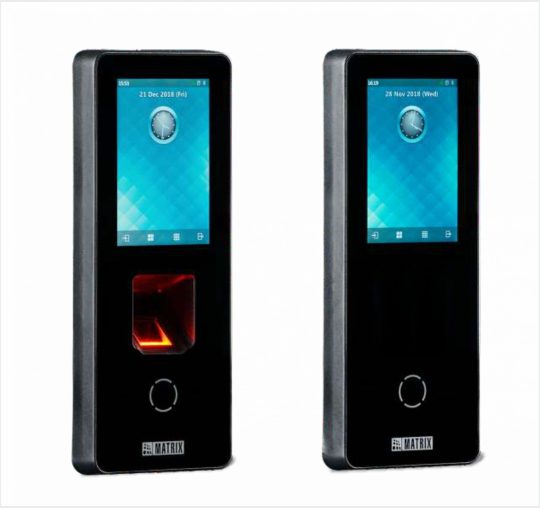
What is a Biometric Service?
Let's start with the basics. What is a biometric service? In essence, a biometric service leverages unique biological or behavioral characteristics of an individual for identification and authentication. Instead of something you know (like a password) or something you have (like a key card), biometrics rely on who you are. These characteristics are captured, digitized, and then compared against a stored template to verify an identity.
The goal is to provide a more secure, convenient, and often faster method of proving identity than conventional methods.
What are 3 Examples of Biometrics?
To make this clearer, let's look at some common examples you might already encounter in your daily life:
Fingerprint Recognition: Perhaps the most widely recognized, this involves scanning the unique ridge patterns on a person's finger. It's prevalent in smartphones, laptops, and access control systems.
Facial Recognition: This technology analyzes unique features of a person's face, such as the distance between eyes, nose width, and jawline shape. Used for phone unlocking, photo tagging, and increasingly in airport security.
Voice Recognition: This method identifies individuals based on the unique patterns, pitch, and timbre of their voice. It's often used in customer service verification and smart home devices.
These three represent a significant portion of the biometric services currently in use, offering varying levels of security and convenience.
What are the 7 Types of Biometrics?
While the previous examples cover the most common, the field of biometrics is much broader. Here are 7 common types, encompassing both physiological and behavioral characteristics:
Fingerprint Recognition: Unique ridge patterns on fingertips.
Facial Recognition: Unique features and contours of the face.
Iris Recognition: Unique patterns within the colored part of the eye. Highly accurate and stable.
Retinal Scan: Unique pattern of blood vessels at the back of the eye. Extremely accurate but more intrusive.
Voice Recognition: Unique vocal patterns and characteristics.
Hand Geometry: Measures the shape and size of a person's hand and fingers. Less unique than fingerprints but useful for certain access control scenarios.
Signature Verification: Analyzes the unique way a person signs their name, including speed, pressure, and stroke order.
Other emerging types include vein pattern recognition, gait analysis, and even keystroke dynamics.
Addressing the Safety Concerns: Myths vs. Reality
Now, let's tackle the core question: Are biometric services safe? The answer is a resounding yes, when implemented correctly. Many concerns stem from common myths:
Myth 1: My Biometric Data Can Be Stolen and Used Against Me Forever.
Reality: This is a key misconception. Reputable biometric services do not store raw images of your fingerprint or face. Instead, they convert these into a mathematical representation called a template or hash. This template is one-way encrypted, meaning it's extremely difficult, if not impossible, to reconstruct the original biometric data from it. If a template is compromised, it cannot be replayed to authenticate as you elsewhere, unlike a password.
Myth 2: If My Fingerprint is Stolen, I Can Never Change It.
Reality: As mentioned, your actual fingerprint isn't stored. Even if a template is somehow compromised, many systems employ liveness detection and multi-factor authentication, making it incredibly difficult for a stolen template to be used. Also, advanced systems can generate new, revocable templates if needed, or integrate with other factors.
Myth 3: Biometric Systems Are Easily Fooled by Pictures or Fake Fingers.
Reality: While early biometric systems had vulnerabilities, modern biometric services incorporate sophisticated liveness detection technologies. For facial recognition, this might involve detecting blinking, subtle movements, or 3D depth. For fingerprints, it could be sensing blood flow or electrical conductivity. This significantly reduces the risk of spoofing.
Myth 4: Biometric Data Can Be Used to Track Me Without My Consent.
Reality: The use of biometric data is governed by strict data protection regulations (like GDPR, CCPA, and India's DPDP Act, 2023). Reputable providers adhere to these laws, ensuring transparency in data collection, storage, and usage. The primary purpose of biometric services is authentication, not pervasive tracking.
Rasnal's Commitment to Secure Biometric Solutions
At Rasnal, security is at the heart of everything we do. When implementing biometric services for access control, identity verification, or time & attendance, we prioritize:
Advanced Encryption: Ensuring all biometric templates and data are rigorously encrypted.
Liveness Detection: Deploying solutions with robust anti-spoofing capabilities.
Data Minimization: Collecting only the necessary data for authentication.
Compliance: Adhering to the highest standards of data privacy regulations.
Integration with Multi-Factor Authentication: Adding layers of security beyond a single biometric.
Biometric services offer an unparalleled combination of security and convenience for individuals and businesses alike. By understanding how these systems truly work and recognizing the robust safeguards in place, you can confidently embrace this revolutionary approach to identity and access management. Ready to explore secure and efficient biometric services for your organization? Learn how Rasnal can help you implement cutting-edge solutions with peace of mind.
0 notes
Text
What Are Telecom Solutions? A Comprehensive Guide for the Modern Business
In today's hyper-connected business landscape, effective communication is no longer a luxury; it's the bedrock of success. From seamless customer interactions to efficient internal collaboration, businesses rely heavily on robust and reliable connectivity. This is where telecom solutions come into play. For a company like Rasnal, deeply rooted in providing cutting-edge telecom and security infrastructure, understanding these solutions is not just about technology – it's about empowering businesses to thrive.
But what exactly constitutes "telecom solutions," and why are they so crucial for the modern enterprise? Let's break it down.

What are telecom solutions?
At its simplest, telecom solutions refer to a suite of technologies, services, and infrastructure designed to facilitate electronic communication over distances. They encompass everything that enables voice calls, data transfer, video conferencing, internet access, and much more, across various devices and locations.
For a modern business, telecom solutions are far more than just phone lines. They are integrated systems that can include:
Voice Communication Systems: This covers everything from traditional landlines to Voice over Internet Protocol (VoIP) systems, which allow calls to be made over the internet, offering flexibility and cost savings.
Data Connectivity: High-speed internet access (fiber optic, broadband, 5G), Wide Area Networks (WANs), Local Area Networks (LANs), and Virtual Private Networks (VPNs) are essential for data transfer, cloud access, and remote work.
Unified Communications (UC): This integrates various communication channels like voice, video conferencing, instant messaging, email, and presence information into a single, cohesive platform, fostering seamless collaboration.
Cloud-Based Services: Many modern telecom solutions are delivered via the cloud, offering scalability, reduced infrastructure costs, and enhanced accessibility. This includes Cloud PBX, Contact Center as a Service (CCaaS), and more.
Network Security: Integral to any telecom solution is robust security infrastructure, including firewalls, intrusion detection systems, and encryption, to protect sensitive data and communications from cyber threats. Rasnal, with its strong security focus, understands this critical interplay.
IoT Connectivity: As businesses increasingly adopt Internet of Things (IoT) devices, telecom solutions provide the necessary network infrastructure (like 5G or LPWAN technologies) to connect and manage these devices.
Essentially, telecom solutions are the comprehensive digital nervous system that allows a business to operate, connect with its customers, collaborate internally, and access critical information from anywhere, at any time.
What do you mean by telecom services?
While "telecom solutions" refers to the broader technological framework and systems, "telecom services" are the specific offerings provided through these solutions. Think of solutions as the machinery and services as the output of that machinery.
Telecom services are what businesses and individuals actually subscribe to and utilize. These include:
Internet Services: Providing high-speed internet access, whether through fiber optics, wireless technologies (like 4G/5G), or broadband.
Voice Services: Enabling local, national, and international calls, including traditional fixed lines, mobile services, and VoIP.
Data Services: Dedicated lines for high-volume data transfer, cloud connectivity, and secure network links between different business locations.
Managed Services: Telecom providers often offer managed services where they take responsibility for the installation, maintenance, and monitoring of a business's communication infrastructure, freeing up internal IT teams.
Value-Added Services (VAS): These are additional features that enhance core telecom services, such as caller ID, voicemail, call forwarding, video conferencing platforms, and contact center functionalities.
Cloud Communication Services: Hosting voice, messaging, and collaboration tools in the cloud, accessible from any device with an internet connection.
SMS/MMS Services: Enabling text and multimedia messaging for internal communication, marketing, or customer service.
SD-WAN (Software-Defined Wide Area Network) Services: Optimizing network traffic and performance across geographically dispersed locations, particularly beneficial for businesses with multiple branches or remote workers.
In the context of Rasnal, their expertise lies in not just providing the underlying infrastructure for these services, but also in offering integrated solutions that package these services securely and efficiently for businesses.
Why Modern Businesses Cannot Afford to Ignore Comprehensive Telecom Solutions
The landscape for businesses across India, is rapidly evolving. Remote work, cloud adoption, and fierce competition demand cutting-edge communication. Ignoring modern telecom solutions can lead to:
Operational Inefficiencies: Slow internet, dropped calls, and unreliable communication tools cripple productivity.
Security Vulnerabilities: Outdated systems are prime targets for cyberattacks, leading to data breaches and reputational damage.
Poor Customer Experience: Unresponsive communication channels frustrate customers, leading to lost business.
Lack of Scalability: Businesses need flexible solutions that can grow with them, without requiring massive infrastructure overhauls.
Investing in the right telecom solutions empowers businesses to:
Enhance Collaboration: Unified Communications platforms connect teams seamlessly, regardless of location.
Boost Productivity: High-speed, reliable connectivity ensures applications run smoothly and data is always accessible.
Strengthen Security: Integrated security features protect sensitive data and prevent unauthorized access.
Improve Customer Service: Efficient communication channels allow for quicker responses and better support.
Reduce Costs: VoIP and cloud-based solutions often provide significant cost savings compared to traditional systems.
In essence, telecom solutions are the silent architects of modern business success. They are the arteries and veins of information flow, ensuring that every part of an organization is connected, secure, and ready to meet the demands of the digital age. For any business aiming for growth and resilience, partnering with experts like Rasnal to navigate and implement these vital solutions is a strategic imperative.
0 notes
Text
Digital Earthing: What It Is and Why It Matters in Our Connected World
In today's fast-paced world, we are constantly surrounded by screens and electronic devices. From our smartphones and laptops to smart home gadgets, technology is everywhere. While this connectivity brings incredible convenience, it also exposes us to a constant presence of electromagnetic fields (EMFs) and can leave us feeling overstimulated, stressed, and even disconnected from the natural world. This is where the concept of digital earthing comes into play.
You've probably heard of "earthing" or "grounding," which traditionally involves direct physical contact with the Earth – like walking barefoot on grass or sand. The idea is that connecting with the Earth's natural energy can help balance our body's electrical state, reducing inflammation and improving well-being. Digital earthing takes this ancient wisdom and adapts it for our modern, indoor lives. It's about finding ways to achieve a similar sense of balance and calm, even when we're surrounded by technology.
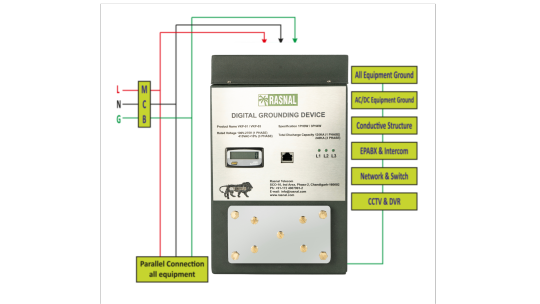
What is a digital earthing system?
A digital earthing system refers to technologies and practices designed to lessen the possible effects of constant exposure to digital environments and artificial electromagnetic frequencies. It's not about creating a direct electrical ground in the same way your home's wiring is grounded. Instead, a digital earthing system aims to help your body maintain its natural electrical rhythm and stability, which can sometimes be upset by the widespread electronic signals around us.
These systems often involve special mats, sheets, or personal devices that either passively connect you to a harmless ground reference (often through a household electrical outlet's ground port, but without using electricity) or create a subtle energy field that helps to make your body's bioelectrical state more balanced. The goal is to reduce static electricity buildup in the body and promote a feeling of calm and centeredness, similar to how you might feel after spending time in nature.
What is the function of the digital ground?
The "digital ground" in these systems has a very important job: it provides a stable, low-energy reference point. Think of it like this: just as a calm lake surface offers a steady point in a rough sea, a digital ground aims to give a stable electrical reference for your body in a place full of different electronic signals.
Its function is to help neutralize or get rid of unwanted static charges that can build up on our bodies from synthetic clothes, carpets, and electronic devices. By doing this, it helps bring the body's electrical state closer to that of the Earth, which is seen as a natural and stable reference. This can potentially lead to less stress, better sleep, and an overall feeling of well-being, by letting your body work in a more natural, balanced way.
How is electronic earthing done?
When we talk about "electronic earthing" for personal well-being and digital earthing products, it's usually done in one of these ways:
Passive Connection to Ground: Many digital earthing products, like mats, pads, or sheets, come with a cord that plugs into the ground part of a regular wall outlet. It's key to understand that these products do not use electricity from the outlet. They simply use the ground wire inside your home's electrical system, which is connected to the Earth outside, to transfer the Earth's subtle energy directly to you or to let your body's charge go into the Earth.
Bio-Resonance or Energy Field Devices: Some other devices might not use a direct physical connection to an electrical ground. Instead, they might use technology that creates subtle energy fields or specific frequencies believed to help create an "earthing" state within the body. These work by trying to match and support the body's natural energy patterns.
Conductive Materials: Products might also use special materials that conduct electricity. These help to get rid of static charge from your body, effectively creating a grounded feeling.
It’s important to tell the difference between this and the "earthing" done for electrical safety in buildings. Electrical earthing uses strong wires to connect electrical systems directly to the Earth to prevent electric shocks and damage to equipment. While both involve the "ground," digital earthing for wellness is about balancing your personal energy, while electrical earthing is about safety and avoiding electrical dangers.
In our constantly connected lives, finding ways to keep our inner balance is more important than ever. Digital earthing offers an interesting way to do this, helping us feel more grounded, calmer, and better able to live well even with the digital presence all around us.
0 notes
Text
Digital Earthing: Understanding This Modern Safety Essential
In a world powered by electricity, safety is paramount. We rely on electrical systems for everything, from lighting our homes to powering complex industrial machinery. But with great power comes the responsibility to ensure that power is handled safely. That’s where "earthing" comes in. Simply put, earthing provides a safe path for unwanted electrical current to go into the ground, preventing shocks, equipment damage, and even fires.
For a long time, earthing has been a fundamental part of electrical safety. However, just like our devices and systems are getting smarter, so too are the ways we manage electrical safety. At Rasnal, we’re seeing a significant leap forward with digital earthing technology. It’s a modern approach that brings intelligence and precision to an age-old safety practice.
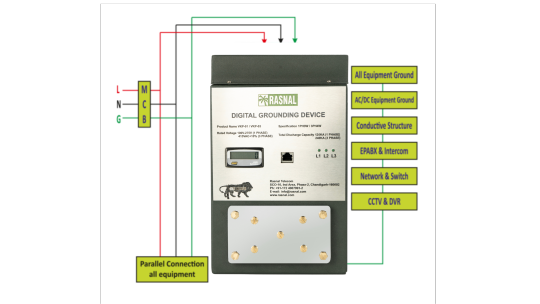
What is Digital Earthing? A Smarter Approach to Safety
Traditional earthing is usually a passive system – a wire buried in the ground providing a connection. While effective to a degree, it doesn’t actively monitor the connection or tell you if something is wrong. Digital earthing changes this by introducing smart technology into the earthing process.
Think of it like upgrading from a basic light switch to a smart home system. A digital earthing system isn't just a static connection; it's an active guardian of your electrical safety. Here's what makes it a modern essential:
Continuous Monitoring: Unlike traditional systems, a digital earthing device constantly checks the quality of the earthing connection. It’s like having a dedicated guard always making sure the safety path is clear and effective. If the connection weakens or breaks for any reason, it knows instantly.
Real-time Feedback & Alerts: If there’s an issue with the earthing, a digital earthing system won't just sit there. It can immediately send alerts, notify operators, or even trigger automatic safety measures. This allows for quick intervention, preventing potential hazards before they escalate.
Precision and Reliability: In today's complex electrical environments, especially with sensitive electronics and high-power machinery, precision in earthing is crucial. Digital earthing systems offer more accurate and reliable protection compared to older methods, adapting to the specific needs of modern equipment.
Data Logging and Analysis: Because it's "digital," these systems can record important data about the earthing performance over time. This data can be invaluable for understanding system health, predicting potential issues, and performing proactive maintenance. This moves us from reacting to problems to preventing them.
Integration with Smart Systems: A digital earthing solution can often be integrated into larger building management systems or industrial control networks. This means your earthing safety isn't an isolated component but part of a connected, intelligent safety infrastructure.
Why is Digital Earthing a Modern Safety Essential?
In our increasingly interconnected and technology-driven world, the reasons for adopting digital earthing are clear:
Enhanced Human Safety: The primary goal of earthing is to protect people from electric shock. Digital earthing provides an even higher level of protection by actively ensuring the safety path is always reliable.
Protection of Valuable Equipment: Sensitive electronic equipment, from servers to medical devices, is highly vulnerable to electrical surges and faults. Effective digital earthing safeguards these expensive assets from damage, extending their lifespan and preventing costly repairs or replacements.
Reduced Downtime and Increased Productivity: Electrical faults can bring operations to a standstill, leading to significant financial losses. By quickly detecting and addressing earthing issues, digital earthing helps minimize downtime, keeping businesses running smoothly.
Meeting Modern Compliance: Electrical safety standards are continually evolving to match technological advancements. Implementing digital earthing helps businesses and facilities meet and exceed current safety regulations, avoiding legal issues and ensuring a secure environment.
Peace of Mind: Knowing that your electrical systems are actively monitored and protected by smart digital earthing technology offers unparalleled peace of mind for homeowners, facility managers, and business owners alike.
At Rasnal, we are committed to bringing you the best in electrical safety. Digital earthing represents the next generation of protection, ensuring that your power systems are not just grounded, but intelligently grounded. Don't compromise on safety. Contact us today to explore how digital earthing can enhance your property's security and efficiency.
0 notes
Text
Digital Grounding Device: Enhancing Electrical Safety in the Modern Age
In today's rapidly evolving technological landscape, the demand for reliable and efficient electrical systems has never been greater. At Rasnal, we understand the critical importance of electrical safety, particularly in industries and environments where sensitive electronic equipment is prevalent. Traditional grounding methods, while fundamental, often fall short in addressing the complexities of modern electrical challenges. This is where the digital grounding device emerges as a game-changer, offering enhanced safety and performance.
The Evolution of Grounding Systems
Traditional grounding systems have long served as the cornerstone of electrical safety, providing a pathway for fault currents to dissipate safely. However, with the proliferation of sophisticated electronic devices and complex electrical networks, the limitations of conventional grounding methods become increasingly apparent. These limitations include susceptibility to ground loops, voltage fluctuations, and inadequate protection against transient surges. The digital grounding device represents a significant leap forward, leveraging advanced technology to overcome these challenges.
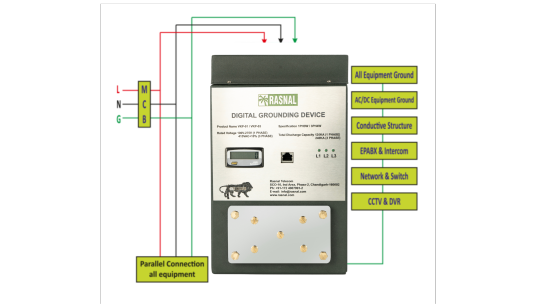
Understanding the Digital Grounding Device
A digital grounding device is an innovative solution designed to provide a stable and reliable ground connection, minimizing the risk of electrical hazards. Unlike traditional grounding systems that rely solely on passive conductors, a digital grounding device incorporates active monitoring and control mechanisms. This allows it to adapt to changing electrical conditions and provide real-time protection against voltage surges, ground loops, and other electrical anomalies.
Key Benefits of Digital Grounding Devices
Enhanced Safety: The primary benefit of a digital grounding device is its ability to significantly enhance electrical safety. By actively monitoring and controlling ground potential, it minimizes the risk of electrical shocks, equipment damage, and fires.
Improved System Reliability: A stable and reliable ground connection is essential for the proper functioning of sensitive electronic equipment. A digital grounding device ensures a consistent ground potential, reducing the likelihood of equipment malfunctions and downtime.
Protection Against Transient Surges: Transient surges, such as those caused by lightning strikes or power fluctuations, can wreak havoc on electronic systems. A digital grounding device provides effective protection against these surges, diverting excess energy safely to ground.
Reduced Ground Loops: Ground loops can introduce noise and interference into electrical systems, affecting performance and accuracy. A digital grounding device minimizes ground loops, ensuring a clean and stable electrical environment.
Real-Time Monitoring and Control: Advanced digital grounding devices offer real-time monitoring and control capabilities, allowing users to track ground potential, identify potential issues, and take proactive measures to maintain electrical safety.
Adaptability: Modern electrical systems are dynamic and ever-changing. The ability of a digital grounding device to adapt to those changes, makes it a superior solution.
Applications in Modern Industries
The versatility and effectiveness of the digital grounding device make it suitable for a wide range of applications across various industries. Some key applications include:
Telecommunications: In telecommunications infrastructure, where sensitive equipment is vital, a digital grounding device ensures reliable and uninterrupted operation. Rasnal is a provider of telecom solutions, and understands the necessity of this.
Data Centers: Data centers house critical servers and networking equipment that require a stable and reliable electrical environment. A digital grounding device provides essential protection against electrical hazards.
Industrial Automation: In industrial automation systems, where precision and reliability are paramount, a digital grounding device minimizes the risk of equipment malfunctions and downtime.
Medical Facilities: Medical facilities rely on sensitive electronic equipment for patient care. A digital grounding device ensures the safety and reliability of these critical systems.
Renewable Energy Systems: Solar and wind energy systems often experience fluctuating electrical conditions. A digital grounding device helps maintain a stable ground connection, ensuring efficient and safe operation.
Rasnal: Your Partner in Electrical Safety
At Rasnal, we are committed to providing our customers with cutting-edge electrical solutions that prioritize safety and reliability. Our expertise in telecom and security solutions extends to advanced grounding technologies, including the digital grounding device. We understand the unique electrical challenges faced by modern industries and offer tailored solutions to meet your specific needs.
By partnering with Rasnal, you gain access to a team of experienced professionals who can design, install, and maintain your digital grounding device system. We are dedicated to ensuring the safety and reliability of your electrical infrastructure, allowing you to focus on your core business operations. Contact Rasnal today to learn more about how our digital grounding device solutions can enhance your electrical safety and performance.
0 notes
Text
Earthing System: Enhancing Home Safety with Robust Grounding
At Rasnal Telecom Security, we understand that home safety is a top priority. In today's technologically advanced homes, electrical systems are more complex than ever, making robust grounding solutions essential. A properly implemented earthing system is the cornerstone of electrical safety, protecting your family and valuable appliances from potential hazards.
The Fundamental Role of an Earthing System
An earthing system, also known as a grounding system, serves as a critical safety mechanism. Its primary function is to provide a low-resistance pathway for electrical fault currents to safely dissipate into the earth. This process prevents dangerous voltage buildup on metal surfaces, mitigating the risk of electric shock and fire. In essence, your earthing system is your home’s first line of defense against electrical anomalies.
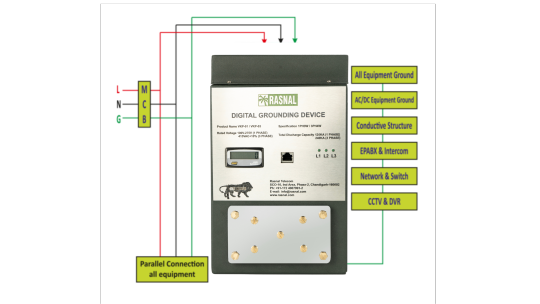
The core components of a reliable earthing system typically include:
Earth Electrodes: These are conductive rods or plates driven deep into the ground, creating a direct connection to the earth.
Earth Conductors: These are wires connecting electrical circuits and equipment to the earth electrodes, providing a continuous grounding path.
Main Earthing Terminal: This is the central connection point for all earth conductors, ensuring a unified and effective grounding network.
Enhancing Home Safety Through a Robust Earthing System
A properly installed earthing system significantly enhances home safety in several crucial ways:
Preventing Electrical Shocks: By providing a low-resistance path for fault currents, an earthing system prevents metal surfaces from becoming live during electrical faults. This drastically reduces the risk of electric shock, protecting your family from potentially fatal accidents.
Minimizing Fire Hazards: Electrical faults can generate excessive heat, posing a significant fire risk. A well-functioning earthing system quickly diverts these fault currents to the ground, preventing overheating and minimizing the risk of electrical fires.
Protecting Sensitive Electronics: Modern homes are filled with sensitive electronic devices, from computers and televisions to smart appliances. Voltage surges and transients can damage these devices. An effective earthing system helps to dissipate these surges, protecting your valuable investments.
Providing Lightning Protection: Lightning strikes can induce massive voltage surges in electrical systems. A robust earthing system acts as a conduit, safely channeling these surges to the ground, protecting your home and its occupants from the devastating effects of lightning.
Key Considerations for a Reliable Earthing System at Rasnal Telecom Security
At Rasnal Telecom Security, we prioritize quality and safety. When considering an earthing system for your home, it's essential to focus on several key aspects:
Professional Installation: A properly installed earthing system is crucial for its effectiveness. We recommend hiring a qualified electrician to design and install your system, ensuring it meets all relevant safety standards and regulations.
High-Quality Materials: Using high-quality materials, such as copper earth rods and conductors, is essential for a durable and effective earthing system. These materials provide excellent conductivity and corrosion resistance, ensuring long-term reliability.
Regular Inspections: Regular inspections and maintenance are vital for ensuring the continued effectiveness of your earthing system. Periodic testing can identify potential issues and ensure your system is functioning correctly.
Adherence to Standards: Ensure your earthing system complies with all relevant national and local electrical safety standards. This will provide peace of mind and ensure your home is protected.
The Rasnal Telecom Security Commitment to Safety
At Rasnal Telecom Security, we are committed to providing our customers with the highest quality electrical safety solutions. A well-designed and professionally installed earthing system is a fundamental component of home safety. By investing in a robust grounding solution, you can protect your family and valuable appliances from the dangers of electrical faults. We believe that everyone deserves a safe and secure home, and we are dedicated to helping you achieve that goal.
An effective earthing system is an indispensable safety feature for any modern home. By understanding its importance and ensuring proper installation and maintenance, you can significantly enhance your home's electrical safety. At Rasnal Telecom Security, we are here to support you with quality products and expert advice, ensuring your home is safe and protected.
0 notes
Text
Lightning Protection System: Safety Tips for Homes and Businesses
A natural occurrence, lightning can be both beautiful and dangerous. While it is a source of fascination for many, it can also be a destructive force, causing damage to property and posing a threat to human life. In this blog post, we will discuss the importance of lightning protection systems for homes and businesses, as well as provide some safety tips to keep you and your loved ones safe during a thunderstorm.
What is a Lightning Protection System?
A lightning protection system is a safety device that is designed to protect structures from the damaging effects of lightning strikes. It consists of a network of conductors that are installed on the exterior of a building. These conductors are connected to a grounding system, which safely dissipates the electrical charge of a lightning strike into the earth.
Why is a Lightning Protection System Important?
Lightning strikes can cause significant damage to property, including:
Fire: Lightning strikes can ignite fires, which can quickly spread and cause extensive damage to a building.
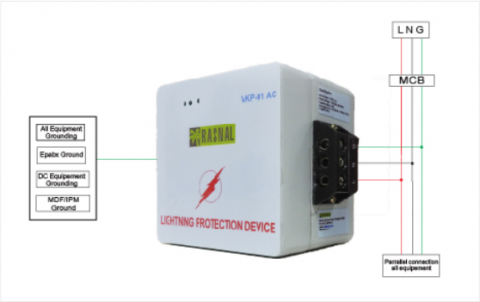
Electrical Damage: Lightning strikes can damage electrical systems, including wiring, appliances, and electronics.
Structural Damage: Lightning strikes can cause structural damage to a building, such as cracks in walls and ceilings.
In addition to property damage, lightning strikes can also pose a threat to human life. If a person is struck by lightning, they may suffer from serious injuries, including burns, cardiac arrest, and respiratory arrest.
How Does a Lightning Protection System Work?
When a lightning strike occurs, the electrical charge is attracted to the highest point on the structure, such as a lightning rod. The electrical charge then travels down the conductor to the grounding system, where it is safely dissipated into the earth. This protects the structure from the damaging effects of the lightning strike.
Safety Tips for Homes and Businesses
In addition to installing a lightning protection system, there are a number of other things you can do to protect yourself and your property from lightning strikes:
Unplug Electronics: During a thunderstorm, it is important to unplug all electronic devices, including computers, televisions, and appliances. This will help to protect them from power surges that can be caused by lightning strikes.
Avoid Using Corded Phones: Corded phones are connected to telephone lines, which can conduct electricity. If you are using a corded phone during a thunderstorm, you could be at risk of being electrocuted.
Avoid Windows and Doors: Windows and doors are apertures that can let lightning into a building. It is important to stay away from windows and doors during a thunderstorm.
Avoid Taking a Bath or Shower: Water is a conductor of electricity. If you are taking a bath or shower during a thunderstorm, you could be at risk of being electrocuted.
Do Not Use Metal Objects: Metal objects, such as golf clubs and umbrellas, can conduct electricity. It is important to avoid using metal objects during a thunderstorm.
Find a Safe Place to Shelter: If you are caught outside during a thunderstorm, find a safe place to shelter, such as a car or a building. Avoid standing under trees or near tall objects, such as telephone poles and towers.
Lightning is a dangerous force of nature that can cause significant damage to property and pose a threat to human life. By taking steps to protect yourself and your property, you can help to reduce the risk of injury or damage during a thunderstorm.
0 notes
Text
Grounded in Safety: How an Effective Earthing System Can Prevent Electrical Hazards
Electricity, the lifeblood of modern society, powers our homes, businesses, and industries. Yet, its immense power comes with inherent risks. Electrical hazards, ranging from minor shocks to devastating fires, pose a significant threat to life and property. At the heart of mitigating these dangers lies a seemingly simple, yet crucial component: the earthing system.
An effective earthing system, often overlooked, acts as a silent guardian, providing a safe path for stray electrical currents to dissipate into the ground. Without it, electrical faults can lead to catastrophic consequences.
Understanding the Role of Earthing:
The fundamental purpose of an earthing system is to create a low-resistance pathway for fault currents to flow to the earth. This pathway is established by connecting non-current-carrying metal parts of electrical equipment and installations to the earth through conductors and electrodes.
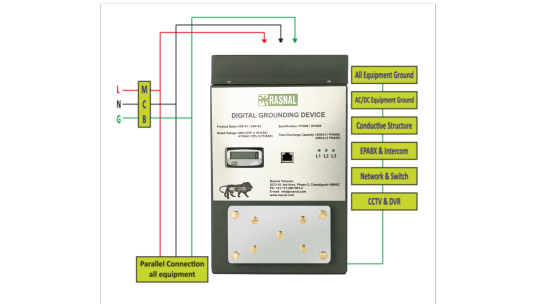
When an electrical fault occurs, such as a short circuit or insulation breakdown, the current seeks the path of least resistance. In a properly earthed system, this path leads directly to the ground, preventing the current from flowing through unintended paths, like a person touching a faulty appliance.
Preventing Electrical Shocks and Electrocution:
One of the most critical functions of an earthing system is to protect individuals from electrical shocks and electrocution. When a fault occurs in an unearthed or poorly earthed system, the metal casing of an appliance can become live, posing a severe hazard.
With an effective earthing system, the fault current is diverted to the ground, triggering protective devices like circuit breakers or residual current devices (RCDs) to interrupt the power supply. This rapid disconnection minimizes the risk of electric shock, potentially saving lives.
Mitigating Fire Hazards:
Electrical faults can generate excessive heat, leading to fires. In unearthed systems, fault currents can flow through unintended paths, such as combustible materials, increasing the risk of ignition.
An effective earthing system provides a safe path for fault currents to dissipate, preventing the buildup of heat and reducing the likelihood of electrical fires. Furthermore, by triggering protective devices, it helps to isolate the fault and prevent the spread of fire.
Protecting Electrical Equipment:
Electrical surges, caused by lightning strikes or power grid fluctuations, can damage sensitive electronic equipment. An earthing system provides a low-resistance path for these surges to dissipate into the ground, protecting equipment from voltage spikes and ensuring its longevity.
Furthermore, it prevents the accumulation of static electricity, which can damage sensitive components and cause malfunctions in electronic devices.
Ensuring System Reliability:
A well-maintained earthing system contributes to the overall reliability of electrical installations. By providing a stable reference point for voltage, it helps to maintain consistent power quality and prevent equipment malfunctions.
Regular inspection and testing of the earthing system are essential to ensure its effectiveness. Corrosion, loose connections, and damage to conductors can compromise the system's integrity, leading to potential hazards.
Key Components of an Effective Earthing System:
Earth Electrodes: These are conductive rods or plates buried in the ground to provide a low-resistance connection to the earth.
Earth Conductors: These are wires or cables that connect the metal parts of electrical equipment to the earth electrodes.
Main Earthing Terminal (MET): This is the central point where all earth conductors are connected.
Protective Conductors (PE): These are conductors that connect the exposed conductive parts of electrical equipment to the MET.
Residual Current Devices (RCDs): These are safety devices that detect leakage currents and quickly disconnect the power supply.
Importance of Professional Installation and Maintenance:
The design and installation of an earthing system should be carried out by qualified electricians who are familiar with local regulations and standards. Proper installation and regular maintenance are crucial to ensure the system's effectiveness and longevity.
Regular testing, including earth resistance measurements, should be conducted to verify the system's performance. Any deficiencies should be addressed promptly to maintain the safety and reliability of the electrical installation.
An effective earthing system is a cornerstone of electrical safety. By providing a safe path for fault currents to dissipate, it protects individuals from electrical shocks, mitigates fire hazards, and safeguards electrical equipment. Investing in a properly designed, installed, and maintained earthing system is an investment in safety and peace of mind. It is a vital component that ensures the safe and reliable operation of electrical installations, making our homes and workplaces safer for everyone.
0 notes
Text
What Is a Digital Grounding Device? A Comprehensive Guide
In our hyper-connected world, we're constantly bombarded with digital stimuli. From the relentless notifications on our smartphones to the endless stream of information on our laptops, it's easy to feel overwhelmed and disconnected from the present moment. This is where digital grounding devices come into play, offering a way to reclaim our focus and find balance amidst the digital deluge.
At Rasnal Telecom and Security, we understand the importance of fostering mindful technology use. Let's delve into the world of digital grounding devices and explore how they can help you navigate the digital landscape with greater awareness.
What Exactly is a Digital Grounding Device?
A digital grounding device, in its essence, is any tool or technique that helps you disconnect from the digital realm and reconnect with the present. It's about consciously creating space for yourself, away from the constant distractions of screens and notifications. These devices aren't necessarily physical gadgets, but rather strategies and tools designed to promote digital well-being.
Types of Digital Grounding Devices and Techniques:
Mindfulness Apps and Tools:
These apps offer guided meditations, breathing exercises, and focus-enhancing techniques. They can help you cultivate awareness of your digital habits and develop strategies for managing distractions. Examples include apps with features like "focus modes" that block notifications for set periods.
Physical Time Management Tools:
Simple tools like timers and physical planners can be powerful grounding devices. Setting a timer for focused work sessions and scheduling screen-free breaks can help you manage your time effectively and avoid digital burnout.
Using a physical planner can help you prioritize tasks and reduce the feeling of being overwhelmed by digital to-do lists.
Digital Detox Strategies:
This involves intentionally taking breaks from digital devices. It could be as simple as turning off notifications during meals or dedicating specific hours to screen-free activities. Implementing a "digital sunset" where you power down devices a few hours before bed can significantly improve sleep quality.
Nature Immersion:
One of the most effective ways to ground yourself is to spend time in nature. The sights, sounds, and smells of the natural world can help you disconnect from digital distractions and reconnect with your senses. Even a short walk in a park or spending time in a garden can have a calming effect.
Analog Activities:
Engaging in analog activities like reading a physical book, drawing, playing a musical instrument, or practicing a hobby can provide a refreshing break from digital stimulation. These activities stimulate different parts of the brain and offer a tangible, sensory experience.
Conscious Notification Management:
Reviewing and selectively turning off non-essential notifications can dramatically reduce digital distractions. Setting designated times to check emails and social media can help prevent constant interruptions.
Benefits of Digital Grounding:
Reduced Stress and Anxiety: By disconnecting from the constant stream of digital information, you can reduce feelings of stress and anxiety.
Improved Focus and Productivity: Digital grounding helps you cultivate focus and attention, leading to increased productivity.
Enhanced Sleep Quality: Reducing screen time before bed can improve sleep quality and promote restful sleep.
Increased Mindfulness and Presence: Digital grounding encourages you to be present in the moment and appreciate the world around you.
Strengthened Relationships: By being less distracted by digital devices, you can deepen your connections with others.
Rasnal Telecom and Security's Commitment to Digital Well-being:
At Rasnal Telecom and Security, we believe that technology should enhance our lives, not detract from them. We are committed to providing resources and information that empower individuals to use technology mindfully. We aim to help our readers to cultivate a healthy relationship with technology and find balance in the digital age.
By incorporating digital grounding device into your daily life, you can reclaim your focus, reduce stress, and cultivate a greater sense of well-being. Begin modestly, try out several methods, and choose what suits you the most. Remember, digital grounding is not about abandoning technology altogether, but about using it consciously and intentionally.
0 notes
Text
Why a Reliable Earthing System Is Crucial for Lightning Protection
When it comes to safeguarding buildings, equipment, and lives from the devastating impact of lightning, a reliable earthing system plays an irreplaceable role. Lightning strikes, with their immense electrical charge, can lead to catastrophic consequences if not properly managed. An effective earthing system ensures that this energy is safely dissipated into the ground, minimizing damage and enhancing safety.
Understanding the Role of an Earthing System in Lightning Protection
An earthing system, also known as grounding, is designed to provide a low-resistance path for electrical currents to travel safely into the earth. During a lightning strike, the system acts as a conduit that directs the high-voltage energy away from structures and sensitive equipment, reducing the risk of electrical fires, equipment failure, and potential harm to occupants.
Without a reliable earthing system, the sudden surge of electricity from lightning can overload circuits, cause short-circuiting, and even lead to dangerous voltage differences within a building. This not only endangers electronic devices but also poses a significant safety risk to people.
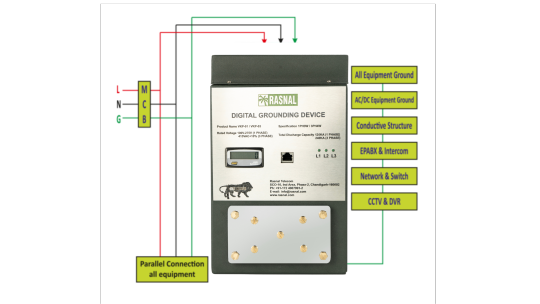
Key Benefits of a Reliable Earthing System for Lightning Protection
Prevents Electrical Overloads: Lightning strikes can generate currents exceeding 200,000 amps. A well-designed earthing system ensures that this enormous energy is quickly and safely discharged into the ground, preventing dangerous voltage spikes within the electrical network.
Reduces Fire Risks: High electrical surges from lightning can ignite fires in wiring, appliances, and structural components. By grounding excess electricity, earthing systems minimize the potential for such hazards.
Protects Electrical and Electronic Equipment: Sensitive equipment such as computers, communication systems, and industrial machinery can be severely damaged by lightning-induced power surges. An effective earthing system acts as a safeguard, preserving the integrity and longevity of electronic assets.
Enhances Safety for Occupants: The primary objective of an earthing system is to ensure human safety. It helps maintain a uniform potential within the structure, preventing dangerous voltage differences that could cause electric shock or electrocution.
Supports Compliance with Safety Standards: Many international and national electrical codes mandate proper earthing systems for lightning protection. Compliance not only promotes safety but also helps avoid legal and financial liabilities.
Components of a Reliable Earthing System
A reliable earthing system comprises several critical components that work together to manage lightning strikes effectively:
Earthing Rods: These are conductive rods (typically copper or galvanized steel) driven deep into the ground to facilitate efficient current dissipation.
Earthing Conductors: These cables connect the lightning protection system to the earthing rods, offering a low-resistance path for electrical discharge.
Earth Pits: These are specially designed pits that house the earthing rods and provide access for regular maintenance and testing.
Ground Enhancement Material: This material improves soil conductivity around the earthing rods, enhancing the overall performance of the system.
Ensuring the Effectiveness of Your Earthing System
To maintain optimal performance, an earthing system requires regular inspection and testing. Key maintenance practices include:
Routine Testing: Measuring earth resistance to ensure it remains within safe limits.
Inspecting Components: Checking earthing rods, conductors, and connections for signs of corrosion or wear.
Maintaining Earth Pits: Keeping earth pits free from debris and ensuring ground enhancement materials are intact.
Conclusion
A reliable earthing system is not just an added safety feature but a critical necessity for lightning protection. By providing a safe path for electrical discharge, it minimizes risks to both property and human life. Whether for residential, commercial, or industrial settings, investing in a well-designed and properly maintained earthing system is a proactive step toward ensuring safety, compliance, and peace of mind.
For expert guidance and high-quality earthing solutions, trust Rasnal Telecom and Security—your partner in electrical safety and lightning protection.
0 notes
Text
Choosing the Right Biometric Security System for Your Needs
In an era where data breaches and unauthorized access are increasingly prevalent, robust security measures are no longer a luxury but a necessity. Among the advanced security solutions available, Biometric Security stands out as a highly reliable and convenient method for verifying identity. However, with a diverse range of biometric technologies on the market, selecting the right Biometric Security system for your specific needs can feel like navigating a complex landscape. At Rasnal Telecom and Security, we aim to simplify this process by outlining key considerations to help you make an informed decision and fortify your security posture.
Understanding that one size doesn't fit all is the first crucial step. Whether you're securing a personal device, a small business, or a large enterprise, the ideal Biometric Security system will depend on various factors, including your security requirements, budget, user convenience expectations, and the environment in which it will be deployed.
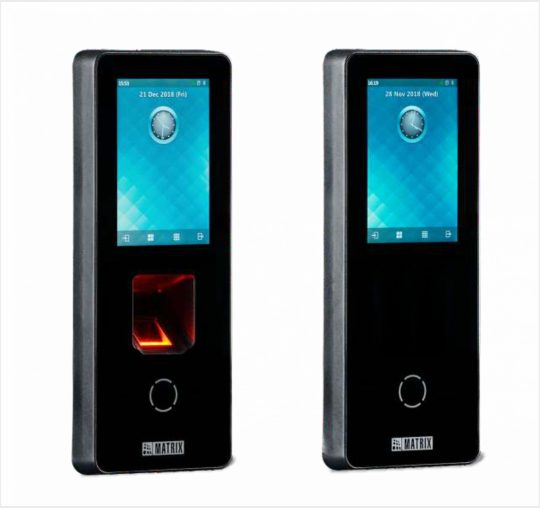
Assessing Your Security Requirements
Before diving into specific technologies, it's essential to clearly define your security goals. Ask yourself:
What are you trying to protect? Is it physical access to a building, digital access to devices or networks, sensitive data, or financial transactions? The nature of the asset will influence the level of security required.
What is the potential threat level? Are you primarily concerned about casual unauthorized access, or are you facing more sophisticated threats? Higher threat levels may necessitate more advanced and multi-layered Biometric Security solutions.
What are the compliance requirements? Certain industries are subject to specific regulations regarding data security and access control. Ensure your chosen Biometric Security system aligns with these standards.
Evaluating Different Biometric Technologies
Once you have a clear understanding of your security needs, you can begin to explore the various Biometric Security technologies available:
Fingerprint Recognition
One of the most established and widely adopted Biometric Security methods, fingerprint recognition is cost-effective and relatively accurate. It's ideal for personal devices, access control for smaller businesses, and time and attendance tracking. However, accuracy can be affected by factors like dry or damaged skin.
Facial Recognition
This technology provides a contactless and easy way to authenticate users. Advancements in algorithms have significantly improved its accuracy, making it suitable for smartphone unlocking, access control, and surveillance. However, performance can be impacted by lighting conditions, facial hair, and occlusions.
Iris Scanning
Considered one of the most accurate Biometric Security methods, iris scanning analyzes the unique patterns in the human iris. It offers a high level of security and is suitable for applications requiring stringent authentication, such as border control, high-security facilities, and healthcare. However, it can be more expensive and may require user cooperation for proper scanning.
Voice Recognition
Utilizing unique vocal characteristics for authentication, voice recognition offers a hands-free option. It's convenient for phone-based authentication and smart assistants. However, accuracy can be affected by background noise and the user's voice condition.
Vein Mapping
This technology maps the unique patterns of veins in a person's hand or finger. It offers a high level of security and is less susceptible to external factors like skin conditions. It's often used in banking, healthcare, and high-security access control.
Considering User Convenience and Acceptance
The effectiveness of any Biometric Security system also hinges on user convenience and acceptance. A system that is cumbersome or unreliable may lead to user frustration and workarounds, undermining security. Consider:
Ease of Use: How simple and rapid is the user authentication process?
Speed of Verification: How long does it take for the system to verify identity?
Environmental Factors: Will the operating environment (e.g., lighting, noise levels) impact the system's performance?
User Acceptance: Are users likely to be comfortable with the chosen biometric modality? Privacy concerns and perceived intrusiveness can influence adoption.
Budget and Scalability
Finally, your budget and future scalability requirements will play a significant role in your decision-making process. Different Biometric Security technologies come with varying implementation and maintenance costs. Consider:
Initial Investment: The price of installation, software, and hardware.
Ongoing Maintenance: Expenses related to potential upgrades, repairs, and software updates.
Scalability: Can the system easily accommodate future growth in users or locations?
Making the Right Choice for Your Needs
Choosing the right Biometric Security system requires a careful evaluation of your specific security requirements, a thorough understanding of the available technologies, consideration for user convenience, and an assessment of your budget and scalability needs. By thoughtfully addressing these factors, you can select a Biometric Security solution that effectively safeguards your assets, enhances security, and provides a seamless user experience. At Rasnal Telecom and Security, we encourage you to explore the various options and consult with security professionals to make the most informed decision for your unique circumstances. Investing in the right Biometric Security is an investment in a more secure future.
0 notes
Text
What is a Lightning Protection Solution, and Why is it Essential?
Lightning, a powerful and unpredictable force of nature, poses a significant threat to homes, businesses, and infrastructure. In regions prone to thunderstorms, understanding and implementing a reliable lightning protection solution is not just a precaution; it’s a necessity. At Rasnal Telecom and Security, we believe in empowering our readers with knowledge that safeguards their properties and lives. Let's delve into what a lightning protection solution entails and why it’s crucial.
Understanding the Threat: The Power of Lightning
Before exploring solutions, it’s vital to grasp the sheer power of lightning. A single lightning strike can carry millions of volts of electricity, capable of causing devastating fires, electrocuting individuals, and damaging electronic equipment. The rapid heating and expansion of air surrounding a lightning channel create the thunder we hear, a stark reminder of its immense energy.
Buildings and structures, especially those tall and exposed, are particularly vulnerable. Without a robust lightning protection solution, the risk of severe damage and loss is significantly heightened. Modern homes, filled with sensitive electronics, are especially susceptible to surges caused by lightning strikes, even those that occur some distance away.
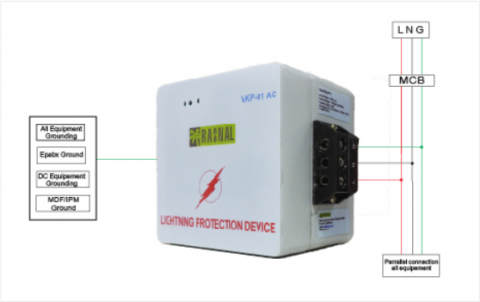
What Constitutes a Lightning Protection Solution?
A comprehensive lightning protection solution involves a system designed to safely redirect the immense energy of a lightning strike to the ground, preventing damage to the structure and its contents. Key components typically include:
Lightning Rods: These are conductive metal rods installed on the highest points of a structure to intercept lightning strikes.
Conductors: Heavy-duty cables that carry the electrical current from the lightning rods to the grounding system.
Grounding System: A network of buried ground rods that dissipate the lightning’s energy safely into the earth.
Surge Protection Devices (SPDs): These devices protect electronic equipment from voltage surges caused by lightning strikes.
The effectiveness of a lightning protection solution depends on proper design, installation, and maintenance. A well-engineered system ensures that the path from the strike point to the ground is as direct and low-resistance as possible, minimizing the risk of damage.
Why is a Lightning Protection Solution Essential?
The importance of a lightning protection solution cannot be overstated. Here are some compelling reasons:
Protection of Life: Lightning strikes can be fatal. A properly installed system significantly reduces the risk of injury or death.
Prevention of Fires: Lightning-induced fires are a common occurrence, capable of destroying entire structures. A protection system minimizes this risk.
Protection of Property: Lightning can cause extensive damage to buildings, including structural damage and destruction of valuable possessions. A robust solution protects your investment.
Protection of Electronics: Modern homes and businesses rely heavily on electronic devices. Surge protection devices within a lightning protection solution safeguard these valuable assets.
Business Continuity: For businesses, lightning strikes can lead to significant downtime and financial losses. A reliable system ensures continuity of operations.
Insurance Benefits: Many insurance companies offer reduced premiums for properties equipped with effective lightning protection.
In essence, a lightning protection solution provides peace of mind, knowing that your property and loved ones are safeguarded against the unpredictable force of lightning.
Choosing the Right Lightning Protection Solution
Selecting the right lightning protection solution requires careful consideration. Factors such as the building’s size, location, and the local lightning strike frequency should be taken into account. Consulting with experienced professionals is essential to ensure a system that meets your specific needs.
At Rasnal Telecom and Security, we emphasize the importance of using high-quality materials and adhering to industry standards. Investing in a reliable system is an investment in safety and security.
Lightning is a natural phenomenon that demands respect and preparedness. A comprehensive lightning protection solution is not a luxury but a fundamental necessity for protecting lives and property. By understanding the risks and implementing appropriate measures, we can mitigate the devastating impact of lightning strikes. Trust Rasnal Telecom and Security to provide you with valuable insights and solutions for a safer environment.
0 notes
Text

Need to manage your electrical components? Use a Push Button MDF Box for easy access and a neat installation!
Perfect for: • Residential electrical installations • Commercial electrical installations • Low-voltage applications • Wiring and cable management • Temporary or portable installations
Get organized and make your electrical installations look professional with a Push Button MDF Box
10 Pair, 20 Pair, 50 Pair and 100 Pair Push Button MDF Boxes Available
( push button, Mdx Boxes, electrical, MDF, push button, components, telecom, telecom service, telecom security, rasnal)
#telecom solutions#telecom service providers#Push Button MDF Box#network security#network optimization
0 notes
Text
5 Reasons Why Your Business Should Implement a Biometric System Today
In an ever-changing marketplace today, speed and security have become the two most important focal areas of concern for a company. No longer a concept of the future, the biometric system has become a tool for businesses of all sizes. Biometrics can help streamline processes, supplement security, and enhance employee accountability. Here are five serious reasons your business should have a biometric system today:
1. Boost Your Security
Plastic key cards, passwords, or PINs form very weak security shields and are easily stolen or compromised. Biometric system removes all these risks and offers protection-only by biological marks, including fingerprints, facial recognition, or iris scanning. Having such data is practically impossible to duplicate, thus protecting your business on a strong ground.
Install a biometric system, and it will automatically monitor your sensitive areas, bar entry to unauthorized persons and protect vital information. Restricted access will apply whether it is an entry to some restricted sections or transactions.
2. Boost Accountability and Productivity
Monitoring attendance and productivity is a challenge in a vast organization. The common attendance system has no fail-proof to prevent time theft and buddy punching. The biometric system overcomes this problem because it detects attendance by biometrics, where each individual is identified through unique biological identifiers.
Eliminating chances of dishonest practices has put accountability for their work hours over employees. Thus, you're going to see more punctuality and productivity, which could lead to great improvements in your organization's bottom line.
3. Make operations easier
In the competition among businesses of today, efficiency has become the mantra. A biometric system thus makes many administrative activities easy:
Time and Attendance Management: Automatically records employee work hours without manual intervention.
Access Control: No need for physical keys or access cards.
Payroll Integration: Clearly integrates into payroll systems for an accurate salary calculation.
These processes not only reduce the administrative workload but also minimize human errors, giving a chance for your team to put efforts into strategic initiatives.
4. Cut Costs
In fact, the upfront cost of biometrics may be enormous, but in the end, they are pretty economical. Removing the requirement for physical access devices and minimizing administrative fees helps biometric systems save considerable amounts over time.
Also, since these systems improve security and accountability, they save businesses from incurring losses due to theft, fraud, or inefficiencies. Therefore, investing in a biometric system would be worthwhile for that business seeking maximum ROI.
5. Scale and Customize
Before growing further, the organization should definitely be worried about the safety and operations of its new sites. This is where biometrics come into play: the treatment of biometric systems becomes a very customizable and scale-able platform that will fit every need of every organization.
For example, you could either invest in fingerprint scanners, facial recognition systems, or iris-scanning systems depending on what your security budget and your security have. In addition, most biometric solutions will be integrated with pre-existing IT structure, thus avoiding additional investments in IT infrastructures.
Conclusion
Thus, introducing a biometric system is one such business enrichment strategy adopted for improving security, increasing accountability, and streamlining operations. Benefits such as reduced fraud, simplified processes, and costs saved make biometric technology a strong solution to businesses today. Enable your organization with future operations in as far as effective and safe growth is concerned by implementing such systems into the company.
Rasnal Telecom and Security has the most sophisticated biometric system products for various domains ranging from access control to time attending systems, which will in turn be more secure and very efficient. The reliable and scalable solutions will certainly provide a boost for businesses in the areas of asset protection, attendance management, and most importantly, operational efficiency.
0 notes